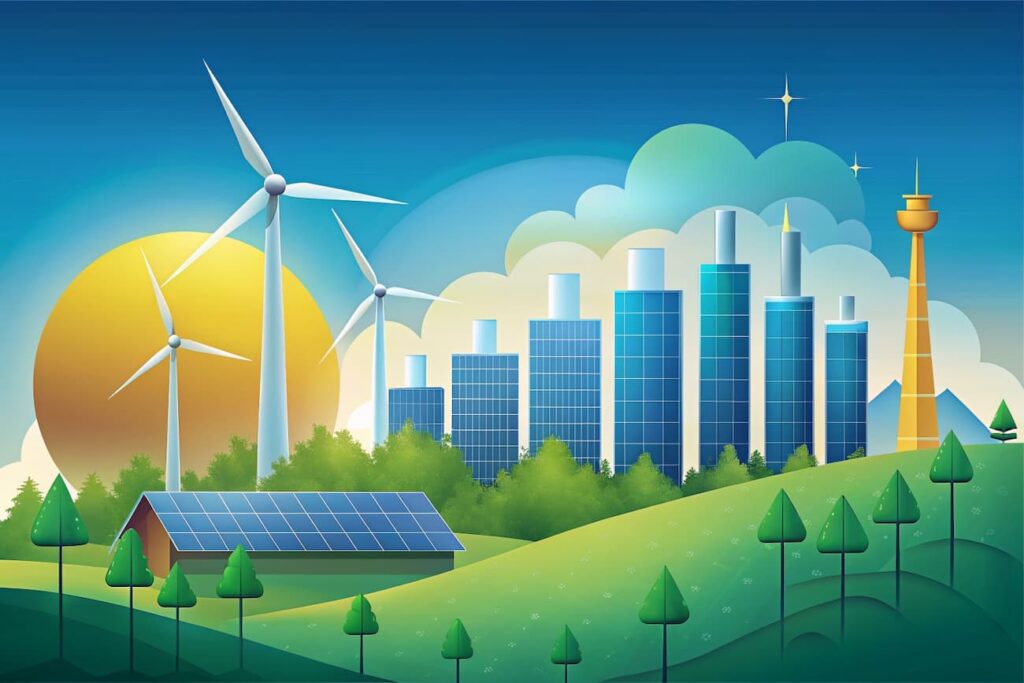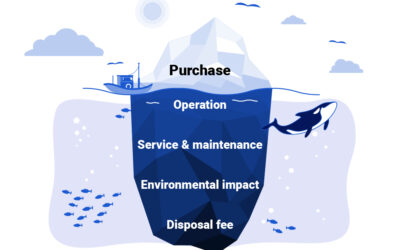Renewable energy has become an increasingly important and relevant topic in the global energy landscape.
This form of energy, coming from inexhaustible natural sources such as sun, wind, water, geothermal and biomass, is gaining more and more ground, revolutionizing the way we produce and consume energy.
In recent years, we have seen significant growth in the adoption and development of renewable energy solutions, leading to major milestones and changes in the industry.
Importance of renewable energy
Renewable energy plays a fundamental role in the transition towards a more sustainable and environmentally friendly future.
It represents a key solution to address the challenges linked to climate change, pollution and the depletion of fossil resources.
Through the large-scale implementation of renewable technologies, we can significantly reduce greenhouse gas emissions, helping to mitigate negative impacts on our planet.
Renewable energy statistics
According to the most recent data, renewable energy has reached a historic milestone, exceeding 30% of global electricity generation.
This result represents an important turning point, demonstrating that renewable sources are becoming increasingly competitive and accessible globally.
This growth is primarily driven by the increase in installed capacity of wind and solar, which are rapidly gaining ground on traditional fossil energy sources.

Types of renewable energy
The main forms of renewable energy include:
- Solar energy : Uses the light and heat of the sun to generate electricity through photovoltaic panels or to heat and cool rooms.
- Wind Energy : Uses the power of the wind to spin wind turbines and produce electricity.
- Hydroelectric power : Uses the movement of water, such as rivers and lakes, to drive turbines and generators.
- Geothermal energy : Uses the Earth’s natural heat to produce electricity or for heating.
- Biomass energy : Converts organic materials, such as wood, agricultural and forestry waste, into thermal and electrical energy.
Each of these renewable technologies offers unique advantages and characteristics, significantly contributing to the diversification of the global energy mix.
The importance of reaching 30% of global electricity generation
Achieving 30% renewable energy in global electricity generation represents a historic and symbolic milestone.
This result demonstrates that renewable sources are becoming increasingly competitive and capable of satisfying a significant portion of global energy needs.
This important milestone is the result of years of investments, technological innovation and support policies, which have allowed renewable energy to gain ground and become an increasingly widespread reality.
Benefits of renewable energy
Large-scale adoption of renewable energy brings numerous benefits:
- Reduction of greenhouse gas emissions : Renewable sources have a significantly lower environmental impact than fossil fuels, contributing to the mitigation of climate change.
- Greater energy independence : Exploitation of local natural resources reduces dependence on imported fossil fuels, increasing energy security.
- Creation of new jobs : The development of renewable technologies generates new employment opportunities in sectors such as production, installation and maintenance.
- Energy Cost Savings : In many cases, renewable energy has become cheaper than traditional sources, leading to cost savings for consumers.
- Improving air quality : Reducing polluting emissions from fossil fuels contributes to improving air quality, with benefits for public health.
These tangible benefits demonstrate the strategic importance of renewable energy to the future of our planet.
Challenges and obstacles for renewable energy
Despite significant progress, the large-scale adoption of renewable energy still faces some challenges and obstacles:
- Initial investment costs : Some renewable technologies, such as wind and solar, still require high initial investments, although costs are steadily decreasing.
- Production variability : Sources such as sun and wind are subject to fluctuations in energy production, requiring more advanced storage and grid integration solutions.
- Electricity infrastructure and networks : Integrating renewable sources into the existing electricity grid can represent a challenge, requiring adaptations and investments in infrastructure.
- Policies and regulations : The lack of supportive policies and a stable regulatory framework can slow the widespread adoption of renewable energy in some countries.
- Social acceptance : In some cases, the installation of renewable plants may encounter resistance from the local population, requiring greater awareness and involvement.
Addressing these challenges proactively will be key to accelerating the transition to a more sustainable energy future.

Leading countries in the use of renewable energy
Globally, several countries have distinguished themselves as leaders in the adoption and development of renewable energy:
- China : It is the country with the largest installed capacity of renewable energy, particularly in solar and wind.
- United States : They are the second largest producer of renewable energy in the world, with a strong presence in solar, wind and hydroelectric.
- Brazil : It is a pioneer in the use of bioenergy, extensively exploiting sugarcane biomass.
- Nordic Countries : Nations such as Norway, Sweden and Denmark are at the forefront in the use of renewable energy, especially in wind and hydroelectric power.
- Germany : It is one of the most advanced countries in the integration of renewable sources, with a significant installed capacity of wind and solar.
In terms of percentages according to the Eurostat report, in 2022 Sweden was the EU country with the highest use of renewable energy.
In this Scandinavian country, almost two-thirds of gross final energy consumption comes from renewable sources, with hydropower in first place, followed by wind energy, solid and liquid biofuels and heat pumps.
In second place is Finland, with 47.9% of energy production coming from renewable sources.
These pioneering countries are demonstrating how renewable energy can be deployed on a large scale, setting new standards and best practices for the rest of the world.
Environmental impact of renewable energy
The widespread adoption of renewable energy has an extremely positive environmental impact.
Unlike fossil fuels, renewable sources such as sun, wind and water do not produce polluting emissions or contribute to the increase in greenhouse gases responsible for climate change.
Renewable energy does not involve the exploitation of limited natural resources, such as oil and natural gas, preserving the balance of ecosystems.
This more sustainable and environmentally friendly approach represents a fundamental step towards protecting our planet for future generations.
Conclusions
Reaching the historic milestone of 30% renewable energy in global electricity generation is an unmistakable sign of the transformation underway in the global energy sector.
This result demonstrates that renewable sources are becoming increasingly competitive and capable of satisfying a significant portion of the world’s energy needs.
Thanks to its numerous environmental, economic and social benefits, the large-scale adoption of renewable energy represents a strategic priority for the future of our planet.
Do you want to know more about the opportunities offered by renewable energy?
Contact us for personalized advice and find out how you can contribute to your country’s energy transition.




